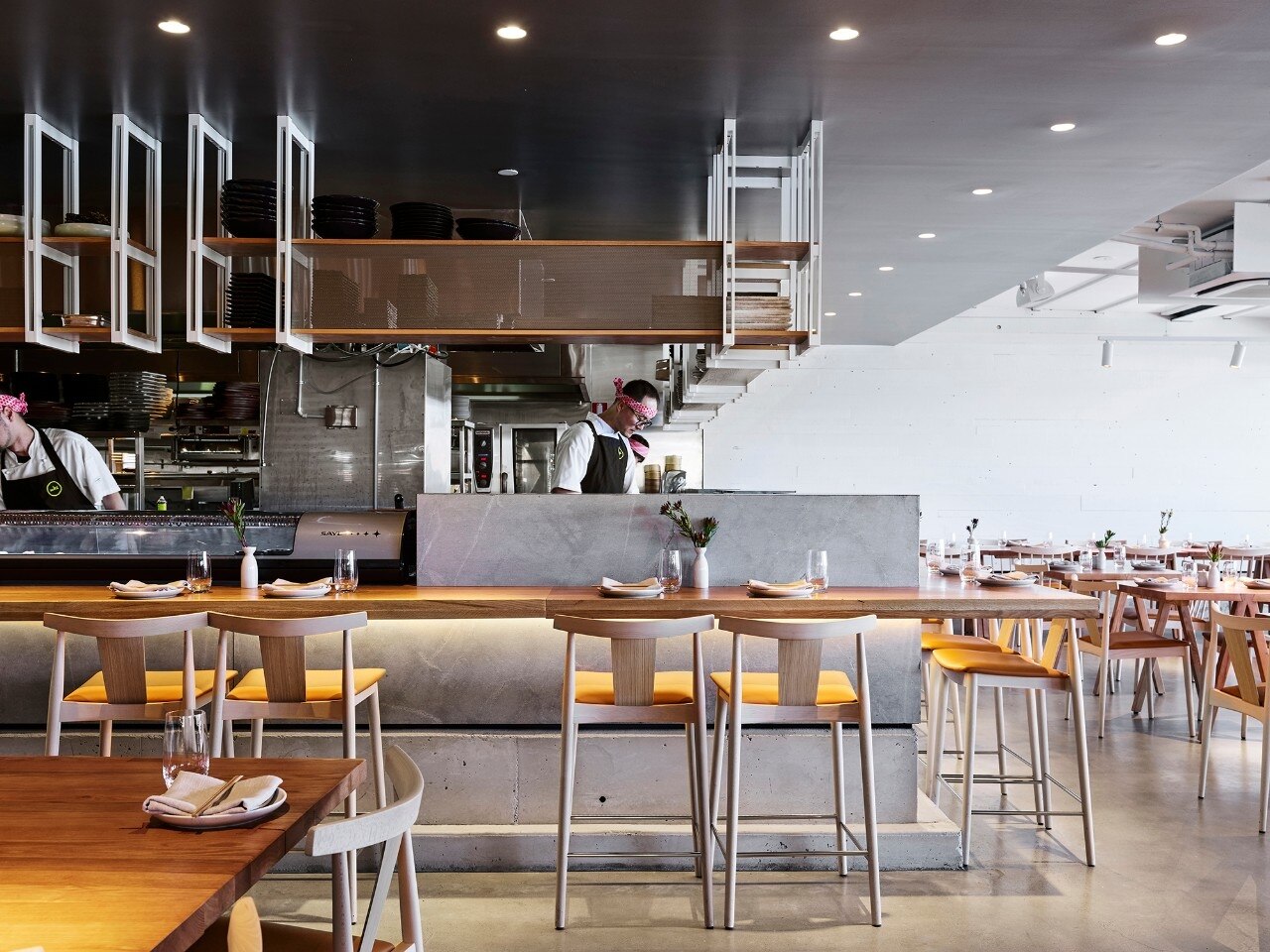This Fine-diner Plates Up Japanese Fare With a Modern Twist

Taste is just one element of the complete sensory experience at Saké. A seat at the sushi counter allows you to eyeball the action as a team of chefs transforms Australia’s most sought-after seafood into delicate bites in a finely choreographed routine. Just metres away, strips of Wagyu release beads of fat that hit the open coals with a hiss and release a smoky aroma from the open kitchen.
Founded in a heritage sandstone building in The Rocks in 2009, Saké was a new kind of Japanese dining experience and critics took note, immediately awarding it a chef’s hat in the Australian Good Food Guide. The restaurant has expanded, adding two venues in Sydney (Saké Manly Wharf and Saké Double Bay) and Saké Hamer Hall, Melbourne.

Overseeing it all is Saké Brand Culinary Chef Shimpei Hatanaka, a second-generation sushi chef born in Japan and raised in Australia. After learning to cook alongside his father, Hatanaka honed his craft at Nobu Atlantis and Kyoto’s Ritz-Carlton hotel, where he specialised in the Japanese fine-dining style of kaiseki.
Now the innovative young chef is drawing on his dual heritage to flex his creative side, devising a sophisticated menu that honours Japanese tradition but is unafraid to experiment.
The Saké philosophy centres on ultra premium, sustainably sourced ingredients. “A lot of Japanese restaurants source ingredients from overseas but we like to focus on using Australian produce so we can get it at its absolute freshest,” says Hatanaka. “The best Japanese food has very delicate flavours so it’s all about letting the produce speak for itself.”

It’s why the Saké menu features a dazzling mix of this country’s most exceptional ingredients, including southern bluefin tuna from South Australia’s Spencer Gulf, full-blood Wagyu from Robbins Island in Tasmania, exquisite long-spine sea urchins mostly from Tasmania and sometimes from Victoria and rich, earthy truffles from Canberra.
Hatanaka takes particular pride in his seafood and the sushi and sashimi dishes of finely marbled tuna, salmon belly, snapper and scampi are always made to order. With a palate attuned to fine seasonal variations in flavour, he has even created a house blend of soy sauce enriched with dried bonito flakes, kombu and mirin to balance out the extra fattiness of the fish in winter. It’s this kind of attention to detail that makes Saké one of the country’s most memorable dining experiences.
Where there’s smoke…
One of Hatanaka’s latest innovations is the new robata section for grilling meat and vegetables over binchotan charcoal. “Because this technique involves cooking over high heat, using smoke rather than flames, you can infuse ingredients with incredible flavour.” When the soy and miso-glazed skewers are almost ready to serve, he runs a little hay straw over the grill to infuse the juicy king brown mushrooms, thinly sliced ribbons of Wagyu and butterflied king prawns with a second layer of smokiness.

The king of fish
Even in a sashimi menu featuring the finest local seafood, one ingredient stands out. “In Japan, bluefin tuna is known as ‘the king of fish’,” explains Hatanaka, who flies in sustainably farmed tuna from Port Lincoln every week. The tuna has a higher fat content in winter, which is the best time to savour this delicacy. Throughout October, Saké will be featuring its most premium product with specialty cuts, including lean, deep-red akami and the highly prized belly meat known as otoro. “This is the fattiest part of the tuna; it’s similar to the highest Wagyu marble score of 9+ so it has this incredible texture and just melts in your mouth.”
Image credits: Supplied by Hunter St. Hospitality


